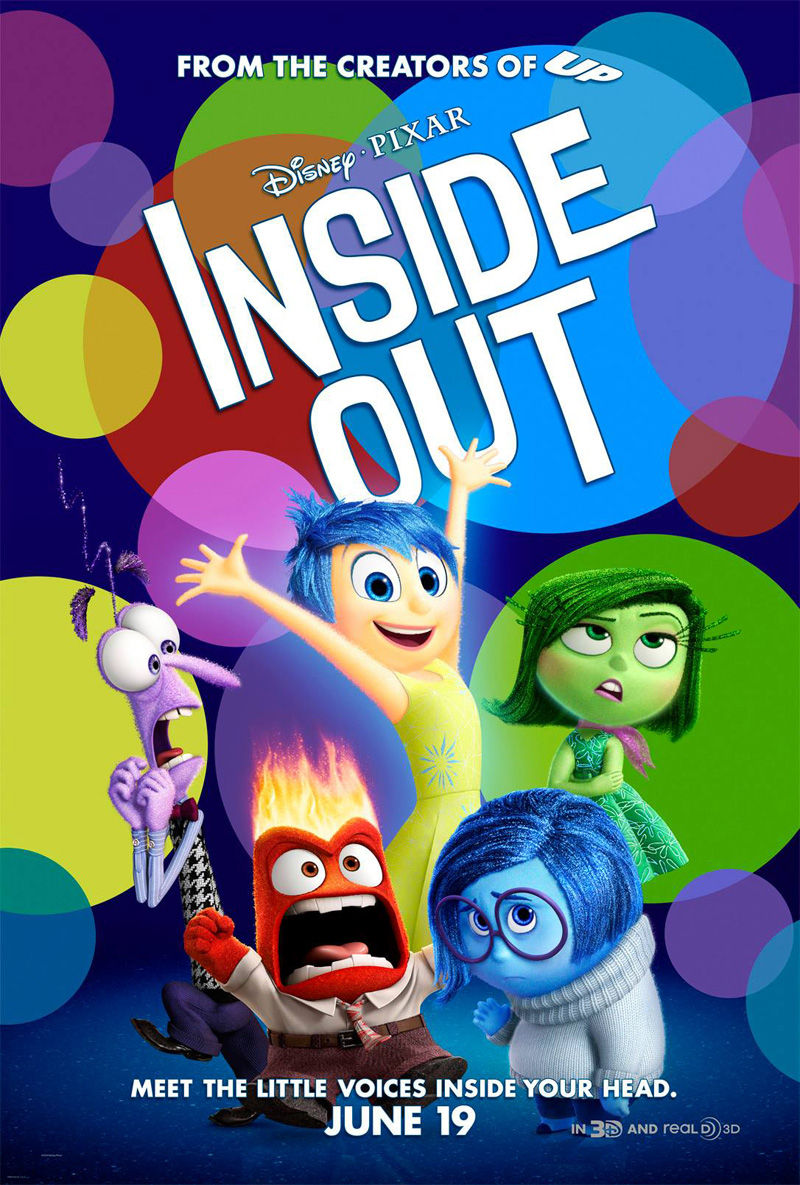
Inside Out is
the new Pixar film (or at least it was until the recent The Good Dinosaur) and yet another highly regarded animation that
both adults and children can watch and enjoy. But is it any good?
We
are probably all familiar with the concept now, but to quickly reiterate – Inside Out takes place largely inside
the head of eleven-year old named Riley, focussing on her emotions personified
here as Joy, Sadness, Anger, Fear and Disgust. When Riley suddenly has to move
house, this shock causes a major upset to her personality – before then, it had
been developing smoothly with a strong emphasis on happiness. Joy and Sadness
become trapped in Riley’s long term memory – leaving Anger, Fear and Disgust in
charge (an obvious disaster). Joy and Sadness attempt to make it back into
Riley’s consciousness before something terrible happens and Riley becomes
changed forever.
It
seems compulsory now to write about how clever the idea behind Inside Out is, and it is for the most part.
In a rushed opening, we are shown the dynamics of this imagined head – from the
emotions themselves to the long term memory bank, Imagination Land, the film
studio that produces Riley’s dreams and the core memories that make Riley who
she is. It is all very imaginative and it is well mapped out and easy to follow
– each emotion is specifically coloured and any memories that they produced all
equally colour-coded. However, a film cannot rest on the cleverness of its
concept alone.
There
are a few things that don’t add up – as silly as it might be to look into this
too much. The film suggests that long term memories can be forgotten
(visualized here as being dropped into a pit and bursting into ashes), but does
not account for unexpected recall – the Proustian rush, if I was going to be
pretentious (which is certainly the way this review is looking). Equally, as
poignant as it might be to have Riley’s imaginary friend disappear into the pit
and out of her memory (the theme of putting away childish things from Toy Story 3 is back in earnest in this
film), it nonetheless doesn’t seem realistic that Riley, or anyone, would just
forget the fact of an imaginary
friend. More troubling is the fact that as Riley becomes more and more reserved
and emotionally numb, ultimately deciding to run away from home, the film
suggests that these sorts of problems are the result of someone’s Joy and
Sadness being sucked accidently into one’s long term memory. Obviously the film
is not supposed to be taken in this way, but it is a problem that the film’s
whole concept only works if you ignore everything about it that doesn’t add up.
There
are two other problems, which are more damaging. The concept is interesting,
but it is unwieldy, and the storyline that has been used to showcase it isn’t
very involving. The story is a rather tired re-run of the journey home with
obstacles arc which has been done to death. Equally, the characters
unsurprisingly are very one-note. Joy is irritating and hardly develops throughout
the film, whereas the other four are barely better than caricatures. As far as
drama and character, Inside Out offers
less than even some of their less ambitious work, such as the Monsters films.
There
are great moments in Inside Out. The
mid-film, sudden trip into the heads of both of Riley’s parents are funny and
welcome – they offer some insight into directions the film could have taken but
didn’t. Equally, there are a few moving moments, particularly the revelation
towards the end that one of Riley’s key core memories was not the result of Joy
alone, but primarily Sadness. The film has a nice view about maturity involving
the mix of all emotions, rather than the prevalence of the positive ones – a
nice spoiler is noticeable in the scene inside the parents’ heads, in which the
emotions are a team and are barely discernible beyond their colours.
Problematically,
Inside Out is too much about a
‘clever’ idea and not enough about drama and character. With what it gains in
imagination, it loses in those moments where other Pixar’s could hit you at
some unexpected emotional level – see primarily Wall-E, Up and Toy Story 3. And with the limited range
of the characters, you are never taught to care.
No comments:
Post a Comment